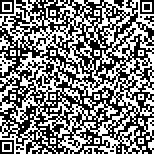| 本文已被:浏览 1827次 下载 1575次 |

码上扫一扫! |
| 长海支点侧屈位X线片在骨骼发育成熟的特发性脊柱侧弯柔韧性评估中的应用 |
| 缪雄1,栗景峰1*,王飞1,吴锦辉1,王超1,袁佳滨1,苗巍2,陈自强1,杨长伟1,魏显招1,石志才1,李明1 |
|
|
(1. 第二军医大学长海医院骨科, 上海 200433;
2. 解放军413医院骨二科, 舟山 316000
*通信作者) |
|
| 摘要: |
| 目的 评价长海支点侧屈位X线片在骨骼发育成熟的特发性脊柱侧弯患者术前柔韧性评估中的作用和价值。方法 选取2013年6月至2015年2月19例骨骼发育成熟的特发性脊柱侧弯患者,女性15例,男4例;年龄20~30岁,平均(23.1±3.5)岁。采用第二军医大学长海医院自行研制的可升降可测重长海支点侧屈位装置对患者的25个胸椎及腰椎侧弯进行术前影像学柔韧性评估。评估内容包括术前站立前后位X线片、长海支点侧屈位X线片(基础支点侧屈位、最大支点侧屈位)、仰卧侧屈位X线片、传统支点侧屈位X线片以及术后1周站立前后位X线片。术前与术后参数间比较采用配对t检验,参数间的相关性采用Pearson相关性分析。结果 19例患者共包括25个结构性弯曲,其中17个主胸弯、8个胸腰/腰弯。仰卧侧屈位、传统支点侧屈位、长海基础支点侧屈位Cobb角与术后1周站立前后位Cobb角相比差异均有统计学意义(P均<0.05);传统支点侧屈位、长海基础支点侧屈位Cobb角与长海最大支点侧屈位Cobb角相比差异均有统计学意义(P均<0.05)。主胸弯和胸腰/腰弯2种侧弯的评估结果与整体评估结果一致。整体数据的相关性分析提示长海基础支点侧屈位、长海最大支点侧屈位柔韧性指数与手术矫正率均呈正相关(r=0.84、0.87,P均<0.01);长海最大支点侧屈位支点高度与支点上所测得的最大重量呈正相关(r=0.67,P=0.001),高度变化与支点重量变化也呈正相关(r=0.60,P=0.001)。结论 与传统的支点侧屈位X线片及仰卧侧屈位X线片相比,长海支点侧屈位X线片可以更好地反映骨骼发育成熟的特发性脊柱侧弯患者的柔韧性,可用于辅助脊柱侧弯患者的术前柔韧性评估;长海支点侧屈位X线片的结果更接近椎弓根螺钉系统矫形的结果。 |
| 关键词: 脊柱侧凸 放射摄影术 柔韧性 支点侧屈 |
| DOI:10.16781/j.0258-879x.2017.11.1384 |
| 投稿时间:2017-05-17修订日期:2017-08-24 |
| 基金项目:国家自然科学基金(81372019). |
|
| Application of Changhai fulcrum bending radiographic technique in assessing curve flexibility of 20-30 years old patients with skeletal mature idiopathic scoliosis |
| MIAO Xiong1,LI Jing-feng1*,WANG Fei1,WU Jin-hui1,WANG Chao1,YUAN Jia-bin1,MIAO Wei2,CHEN Zi-qiang1,YANG Chang-wei1,WEI Xian-zhao1,SHI Zhi-cai1,LI Ming1 |
(1. Department of Orthopedics, Changhai Hospital, Second Military Medical University, Shanghai 200433, China;
2. Department of Orthopaedics(Ⅱ), No. 413 Hospital of PLA, Zhoushan 316000, Zhejiang, China
*Corresponding author) |
| Abstract: |
| Objective To evaluate the role and value of Changhai fulcrum bending radiograph (CH-FBR) in curve flexibility assessment of patients with skeletal mature idiopathic scoliosis. Methods Twenty-five thoracic and lumbar vertebrae curves derived from 19 patients with skeletal mature idiopathic scoliosis treated in Changhai Hospital of Second Military Medical University between Jun. 2013 and Feb. 2015 using Changhai fulcrum bending radiographic technique were enrolled. The patients included 15 females and 4 males, with an average age of (23.1±3.5) years old (ranged from 20 to 30 years old). The assessment of radiographs included preoperative standing posterior-anterior radiograph, Changhai fulcrum bending radiograph (starting fulcrum bending, maximum fulcrum bending), supine side-bending radiograph, traditional fulcrum bending radiograph and postoperative standing posterior-anterior radiograph one week after surgery. Paired t-test was used to assess the differences between preoperative and postoperative parameters, and the correlation between parameters was analyzed by Pearson correlation analysis. Results There were a total of 25 curves in this study, including 17 thoracic curves and 8 thoracolumbar/lunbar curves. Cobb's angles in supine side-bending, traditional fulcrum bending and Changhai starting fulcrum bending were significantly different from the Cobb's angles in postoperative standing posterior-anterior (all P<0.05); Cobb's angles in traditional fulcrum bending and Changhai maximum fulcrum bending were significantly different from the Cobb's angle in Changhai starting fulcrum bending (P<0.05). The results of 17 thoracic and 8 thoracolumbar/lunbar curves were same as 25 curves. Correlation analysis of 25 curves showed that the flexibility rates in Changhai starting fulcrum bending and Changhai maximum fulcrum bending were both positively related to correction rate (r=0.84, 0.87; both P<0.01). The height of Changhai maximum fulcrum bending radiograph was positively correlated with the maximum weight (r=0.67, P=0.001), and the height changes of Changhai maximum fulcrum bending radiograph was positively correlated with the weight changes (r=0.60, P=0.001). Conclusion Changhai fulcrum bending radiograph is more reliable and effective than traditional fulcrum bending radiograph and supine side-bending for curve flexibility evaluation in patients with skeletal mature idiopathic scoliosis. Compared with the traditional fulcrum bending radiograph and side-bending radiograph, the flexibility suggested by the Changhai fulcrum bending radiograph is closer to the postoperative result made by pedicle screws fixation and fusion. |
| Key words: scoliosis radiography flexibility fulcrum bending |
.jpg)
.jpg)